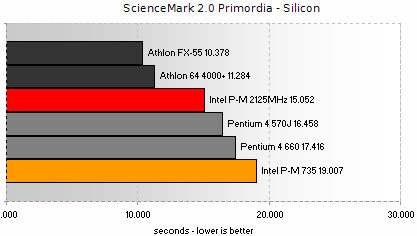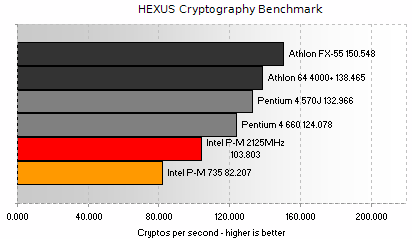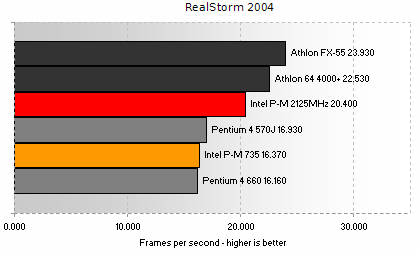ScienceMark 2.0 Primordia, HEXUS Crypto, Realstorm 2004
ScienceMark 2.0 Primordia

Pentium-M scales linearly, something you're going to see quite a bit. It's a hint that the processor is being held back by the platform and it just wants to stretch its legs with a faster bus and more bandwidth.
Also, when overclocked to 2125MHz it starts to take on the upper echelons of current desktop x86 performance.
HEXUS Crypto
HEXUS Crypto is a small benchmark that does AES encryption on data, that I've been hacking on in recent times. Built in C# using the .NET framework, it should become generally available shortly.
My cryptography benchmark is cache-agnostic and shows off the FPU prowess of a given processor at a given frequency. Overclocked, the P-M scales with frequency, linearly. Extrapolating, the P-M would only need to be around 2600MHz to match the Pentium 4 some 1000MHz faster in terms of external frequency, although applying the same formula to the 2600MHz FX-55's score would have the P-M at around 3GHz to match it. Remember that those theoretical calculations assume the 855GME as the platform.
Realstorm 2004

Another benchmark that ranks processors mainly on FPU ability, Realstorm pegs a 1.7GHz Dothan P-M on its 100MHz bus with 855GME and those limitations, as equal to a 3.6GHz Prescott-2M on a 200MHz bus, being fed by dual channels of DDR2 at 533MHz. Overclocked 25%, the P-M nudges up close to the 2.4 and 2.6GHz Athlon 64 processors.









